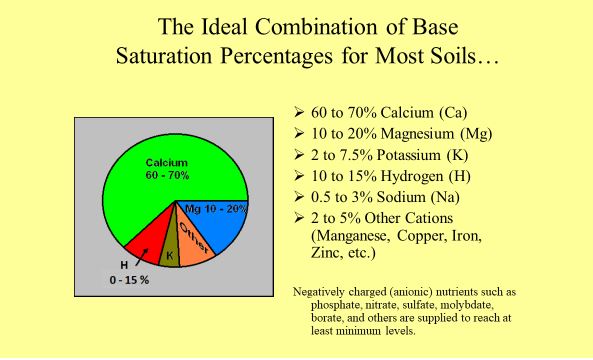
The number of beneficial organisms in the soil determines the extent to which the soil will grow and produce abundant, healthful crops. Soil health is intertwined with soil life. In order to promote soil health, it is important to determine what will promote the most life in the soil.
Living organisms that are most active are always found in the healthiest soils. In determining soil health, soil life plays a major role. Life in the soil depends on the same essentials as all life. In order to build better soil health, it is crucial to ensure that the correct amount of life’s most critical requirements is provided.
The four basic needs of life are shelter, food, water, and air. In terms of life expectancy and probability of disappearance, which is most likely to survive the longest? First would probably be shelter, followed by food, then water, then air. Since we cannot live without air for very long, it is the most important.
Soil with Air
Similarly to insufficient oxygen, clay soils have difficulty breathing. Microbial activity is interfered with because too much water prevents air from reaching the proper depth in the soil. It is unfortunate that only a small fraction of those involved in agriculture understand the importance of having the correct amount of air in the soil, let alone the methods that should be used to rectify the problem. Possibly because of this, soil life and soil health are not pointed out as the greatest problems.
What is the importance of air for soil health? Humus formation depends heavily on it. The aerobic zone of the soil is where humus is formed. In each type of soil, the aerobic zone is the depth at which air is sufficiently available for microbial activity and plant health.
Because of the abundance of air in the top two inches of soil, microbiologists estimate that 70% of humus is produced there. Ninety-five percent of soil humus is formed in the aerobic zone, and 100 percent is formed in the top five inches.
The best way to assess each soil’s aerobic zone (how deep microbes that rely on air can exist and function) is to remember that rotting fenceposts are an indication of the soil’s aerobic zone. Generally, this is between 6.5 and 8 inches deep.
The most important step in building excellent soil health is how much air is provided to the soil? How many people consider this to be the most important step? In spite of this, is there anything that can be universally done to correct the soil’s lack of aeration?
The changing structure of soil
To supply plant nutrients and build humus in our soils, air is required to keep a healthy set of microbes. The question is, however, how can the correct amount of air be determined?
There are too few people who can answer this important question. Is it possible for farmers and growers to detect the lack of soil aeration? In order to promote soil life and soil health, how much aeration should be provided to the soil? Agriculturalists reject a way of finding this answer as it does not translate into immediate sales and profits, despite the fact that it is very profitable for the farmer and the land.
Each soil’s physical structure must be measured and corrected. Water and air are determined by the soil’s physical structure (its ability to absorb water, absorb air, and provide roots with what they need). It is believed that the ideal soil has a specific physical structure. Humus would be a better mineral content than air, water, and 50 percent minerals.

It is necessary to measure and correct the soil’s physical structure. The physical structure of the soil (its ability to absorb water, air, and provide root nutrition) determines its ability to absorb water and air. There is a physical structure believed to be characteristic of the ideal soil. In comparison with air, water, and 50 percent minerals, humus would be a better mineral source.
The saturation percentages of the elements that have a significant impact on pore space must be determined for each soil in order to determine how much air is needed per unit of water. In order to understand and farm the soil correctly, calcium, magnesium, potassium, and sodium are the essential elements.
To be aligned with an ideal soil, a soil’s physical structure must meet the textbook definition. The soil’s total exchange capacity (TEC) is determined by measuring and adjusting the calcium, magnesium, potassium, and sodium base saturation percentages. These relationships are shown in the pie chart in this article.

In order for the soil and crops to thrive, it is imperative to correct any problems that are preventing proper nutrient uptake, correct physical structure, and ideal environmental conditions.
Thus, soil aeration can be maximized by achieving the right relationship between calcium, magnesium, potassium, and sodium. Usually, if one or more of these is too much, the others are too little. The soil will not have the optimal amount of air to water ratio until any excesses or deficiencies in these four elements are corrected.
When building the proper soil structure, calcium and magnesium are the most crucial elements, so correcting them first is always the best idea. To ensure optimum biological activity, the soil should have the ideal physical structure and therefore the ideal amount of air.
Magnesium And Calcium Balance
Before correcting calcium and magnesium levels, three basic points should be understood.
The calcium plus magnesium base saturation of the soil must always equal 80 percent for the correct physical relationship between air and water. Calcium and magnesium balance determines whether a soil is friable by determining whether it is too tight or loose. This relationship applies to all soils with TECs greater than 4.16. Lower TEC soils require a separate course to explain all the differences.
The second point is addressed as calcium and magnesium reactions change the soil’s base saturation. It is genThe change is generally expected to Calcium decreases bWhen magnesium increases by 1 percent, calcium decreases by 1 percentery 1 The calcium will also decrease by 1 percent for every 1 percent increase in magnesium without an increase in calcium to counteract itr Watch out for soils with high TECs. Some will have magnesium trapped between clay layers, whereas others may have an abnormally high pH or sodium or potassium content.
In order to control any excesses, it is important to correct the obvious deficiencies.
In order for soils to perform at their best, there is a basic foundational key: Ensure each has adequate air supplied to it. To determine what air each soil needs, a detailed soil analysis is required.
It is still necessary to have enough air in the soil in order to achieve excellent soil health, even though cover crops, compost, adding carbon, and adding nutrients all contribute to soil health.
A well-aerated soil provides the proper structural support for air and water by having the correct proportions of calcium, magnesium, potassium, and sodium. Is it always going to be perfect? There are several factors that affect aeration, including the amount of rain and the amount of water available. Unless soil nutrients are present in the correct proportions, the soil cannot adjust to the ideal conditions in the shortest time possible. It is imperative to provide proper aeration in soils in order to achieve soil fertility and plant health.

